Back and neck pain are one of the most common reasons to see a doctor. Pain is usually caused by problems with the musculoskeletal system - most pronounced with problems with the spine, including the bones of the spine (vertebrae), the intervertebral discs, and the muscles and ligaments that support them. Sometimes back pain is caused by a condition that does not affect the musculoskeletal system.
Low back pain is more common in older age groups and affects more than half of people over 60. This results in significant costs in the form of health care payments, disability benefits and lost work time.
The spine (spine) is made up of vertebrae. There are shock-absorbing discs between the vertebrae. Discs have a hard outer layer of fibrous cartilage tissue and a soft, jelly-like inner substance called the core. Each vertebra has two joints behind the intervertebral discs. These joints are called facet joints. The articular surfaces of one vertebral body lie on the articular surfaces of the other below and form a joint. The joints and thus the entire spine are stabilized by ligaments and muscles, namely:
- Two iliopsoas muscles that run on either side of the spine
- Two back straighteners that extend the entire length of the spine behind it
- Many short paravertebral muscles between the vertebrae
The spinal cord is located in the spinal canal. Along the entire length of the spinal cord, the spinal nerves exit through the holes between the vertebrae on either side, the function of which is to unite all the nerves in the body. The part of the spinal nerve near the spinal cord is called the root. Due to the peculiarities of the position of the roots of the spinal nerves, if the spine is injured, they can become compressed (compression), which leads to pain.
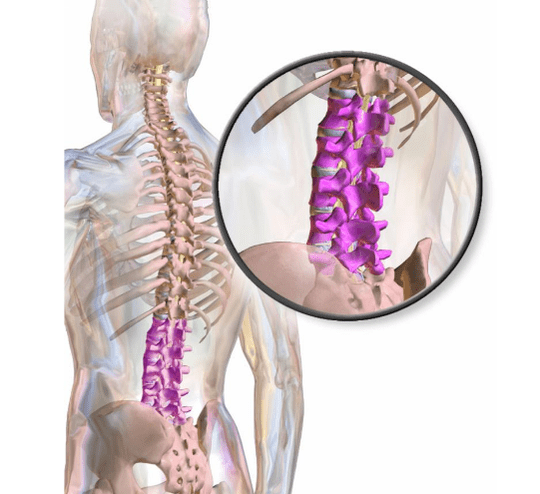
The lower spine (lumbar spine) is connected above with the upper spine (thoracic spine) and below the pelvis by the sacrum. The lumbar spine is flexible enough to bend, twist, and bend and provides strength when standing, walking, and lifting. Thus, the lower back is involved in almost all types of daily activities. Low back pain can interfere with various activities and decrease quality of life.
Types of back pain
Common types of low back pain are localized, radiating, and retroactive pain.
Local painappears in a specific area of the lower back. It is the most common type of back pain. The cause is usually a disc injury, arthritis of the joint and, less often, a muscle strain. The pain can be persistent and painful, or it can be replaced by intermittent acute pain at some point. Sudden pain can occur if trauma is the cause. Local pain can increase or decrease with a change in position. Touching the lower back can be painful. Muscle cramps are possible.

Radiating painIs a low back pain that spreads to the leg. The pain can be dull or sharp and intense. Typically it only affects the side or back of the leg and can reach the foot or just the knee. Referred pain is usually a manifestation of compression of the spinal nerve root in diseases such as a herniated disc, sciatica, osteoarthritis, or spinal canal stenosis. Coughing, sneezing, exertion, or bending over with your legs straight can be painful. When a spinal nerve root is compressed, the pain may be accompanied by leg muscle weakness, tingling, or even loss of sensation. In rare cases, there is a loss of control over urination (urinary incontinence) or loss of control over bowel movements (fecal incontinence).
Reflected painfelt in a different location than the actual cause of the pain. For example, some people who have had a heart attack have pain in their left arm. The pain reflected by the internal organs in the lower back is predominantly deep and painful in nature, and its exact location is difficult to pinpoint. When moving, the pain usually does not increase, in contrast to the pain-related diseases of the musculoskeletal system.
The reasons
In most cases, back pain is a result of diseases of the spine and the surrounding joints, muscles, ligaments and roots of the spinal nerves and the intervertebral discs. Often a single specific cause cannot be identified. Any painful spinal disease can cause reflex contraction (spasm) of the muscles around the spine. The cramp can make the pain worse. Stress can make back pain worse, but the mechanism is not clear.
Sometimes back pain is caused by a condition that does not affect the spine, such as cancer, gynecological conditions (such as premenstrual syndrome), kidney disease (such as kidney stones), urinary tract disease (such as infections of the kidneys, bladder, and prostate), and digestive tract (such as diverticulitis) as well as diseases of the large arteries near the spine.
Common causes
Common causes of back pain are the following:
- arthrosis
- Compression fractures of the spine
- A herniated disc or a herniated disc
- Spinal stenosis in the lumbar spine
- Spondylolisthesis
- Damage to muscles and ligaments
- Fibromyalgia
damagecan occur during normal activities (e. g. heavy lifting, exercise, unexpected movements) or as a result of injuries such as a fall or traffic accident. Typically, imaging studies don't show specific lesions, but doctors suggest that some muscles and / or ligaments are affected.
arthrosis(degenerative arthritis) causes the cartilage between the articular surfaces to wear down and bone spikes (osteophytes) to form. This disease is, in part, the result of years of tissue wear and tear. In severe degeneration and loss of disc height, osteophytes in the foramen can compress the roots of the spinal nerves. All of these changes can lead to lower back pain as well as stiffness.
Compression fractures of the spine (from compression)(Vertebral fractures) are common when bone density decreases due to osteoporosis, which usually develops with age. However, osteoporosis-related fractures are more likely to occur in the upper and middle back areas and are more likely to be accompanied by pain in these regions than in the lower spine.
A herniated disc or a herniated disccan cause back pain. The disc is represented by a dense outer layer and a soft, jelly-like central part. If the intervertebral disc is constantly stressed by the vertebrae above and below (e. g. when leaning forward, especially when lifting heavy objects), its outer layer can tear (tear) and cause pain.
Spinal stenosis in the lumbar spine- Narrowing of the spinal canal (which runs through the center of the spine and contains the spinal cord and nerve bundle that extends down from the lower part of the spinal cord) in the lumbar region. It is a common cause of back pain in the elderly. Spinal canal stenosis also develops in middle age in people whose spinal canal is narrow from birth. Spinal canal stenosis is caused by conditions such as osteoarthritis, spondylolisthesis, ankylosing spondylitis, and Paget's disease.
Spinal stenosis can cause sciatica and back pain.
Spondylolisthesis- partial displacement of the vertebra in the lower part of the spine. One type usually occurs during adolescence or adolescence (often in athletes) and is caused by an injury that breaks part of the vertebrae. If both sides of the vertebra are affected, the vertebra can slide forward over the vertebra below. Spondylolisthesis can also occur in the elderly, but mainly as a result of degenerative disease. With the development of spondylolisthesis in adulthood, the risk of spinal stenosis in the lumbar region increases.
FibromyalgiaIs a common cause of pain that affects many parts of the body, including the lower back. This condition results in chronic diffuse pain in the muscles and other soft tissues outside of the lower back. Fibromyalgia is also characterized by difficulty sleeping and fatigue.
Survey
Tests aren't usually prescribed because most back pain is due to osteoarthritis, sprains, or other minor musculoskeletal disorders and goes away within 6 weeks. Imaging tests are often needed when:
- another reason is suspected;
- there are warning signs;
- Back pain persists.
An examination may also be ordered if initial treatment does not work, or if symptoms worsen or change.
X-rays of the lower back can only provide a picture of the bones. Such images can detect degenerative changes due to osteoarthritis, spinal compression fractures, spondylolisthesis, and ankylosing spondylitis. However, magnetic resonance imaging (MRI) or computed tomography (CT) can provide a clear picture of bones and, as is typical of MRI, show soft tissues (including discs and some nerves). An MRI or CT scan is usually needed when doctors determine the presence of conditions that cause changes in bone structure, as well as soft tissue disorders.
If spinal cord compression is suspected, an MRI is performed as soon as possible. In rare cases, when MRI results are ambiguous, it becomes necessary to perform myelography with CT. In rare cases, if a malignant tumor or infection is suspected, a tissue sample (biopsy) must be taken for analysis. In some cases, electromyography and nerve conduction studies are done to confirm the presence, location, and in some cases, the duration and severity of compression of the spinal nerve root.
prophylaxis
People can reduce their risk of low back pain by taking the following measures:
- Sports exercise;
- Exercises to strengthen and stretch muscles;
- Maintaining a normal body weight;
- maintain correct posture;
- Follow recommendations for safely lifting weights.
The most effective way to prevent back pain is to exercise regularly. Aerobic exercise and specific exercises to build muscle strength and stretching are advisable.
Aerobic exercise like swimming and walking improves overall fitness and strengthens muscles.
Special exercises designed to develop muscle strength and stretch the muscles of the abdominal wall, buttocks and back (deep core muscles) allow you to stabilize the spine and stretch the intervertebral discs, which the spine absorbs, and the ligaments, which the spine absorbs, keep reducing them.
Strength-building exercises include pelvic tilts and abdominal crunches. Stretching exercises include stretching by bending your knees towards your chest. For some people, stretching can increase back pain, so caution is advised. The basic rule is that any exercise that causes or worsens back pain must be stopped. The exercises should be repeated until slight (but not extreme) muscle fatigue is felt. Breathing is essential during exercise. People with back pain should see a doctor before exercising.
Pelvic tilts Lie on your back with your knees bent, heels on the floor, load on your heels. Press your back to the floor, contract your glutes (lift them about an inch from the floor), and contract your abs. Hold this position for a count of 10. Repeat 20 times. |
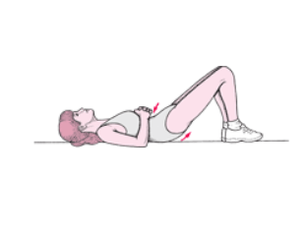 |
Lying crunches Lie on the floor while you sleep with your knees bent and feet flat. Cross your arms over your chest. Contract your abs, slowly lift your shoulders about 10 inches off the floor, and keep your head straight (your chin shouldn't be touching your chest). Relax your abs, slowly lower your shoulders. Do 3 sets of 10 reps. |
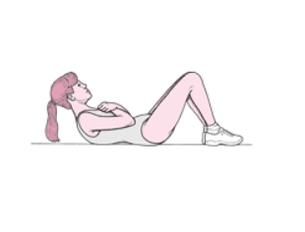 |
Stretches with your knees towards your chest Lie on your back, straighten up. Place both palms of your hands under one knee and press it against your chest. Hold the position and count to 10. Slowly lower your leg and repeat with the other leg. Do the exercise 10 times. |
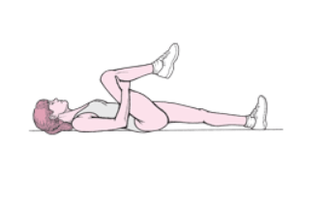 |
Exercise also makes it easier to maintain the desired body weight. Exercise also helps maintain bone density. Therefore, exercise can reduce the risk of developing two conditions that can cause back pain: obesity and osteoporosis.
Correct posture while standing and sitting reduces the stress on the back. Swallowing should be avoided. Chair seats should be adjusted in height so that feet are flat on the floor, knees are slightly bent and the lower back is snug against the back of the chair. If the chair does not support the lower back, a pillow can be placed under it. In a sitting position, it is recommended to put your feet on the floor and not cross your legs. Sick people should not stand or sit for long periods of time. If you have to stand or sit for a long time, frequent changes of position can take the strain off your back.
treatment
If a specific cause can be determined, the disease will be treated. Antibiotics are used, for example, to treat a prostate infection. However, there is no cure for musculoskeletal sprain pain or pain caused by other medical conditions. However, general measures can improve the situation. Typically, such measures are also used when squeezing the spinal nerve root.
General measures for back pain
Possible measures are:
- Make changes to activities
- Taking pain relievers
- Apply heat or cold to the painful area
- Light movement if tolerated
For newer back pain, treatment begins with eliminating activities that put strain on the back and cause pain, such as lifting weights and bending over. Bed rest does not speed up pain relief, and most professionals recommend light labor. Bed rest, necessary for severe pain relief, should not be longer than 1 or 2 days. Prolonged bed rest weakens core muscles and increases stiffness, resulting in worse back pain and slower recovery. Corsets and traction are ineffective. Traction can slow healing.
Over-the-counter or prescription nonsteroidal anti-inflammatory drugs (NSAIDs) can relieve pain and reduce inflammation. Opioid analgesics are sometimes prescribed when NSAIDs do not provide adequate pain relief, but they should only be used for short periods of time because long-term use of opioid analgesics can, conversely, increase pain sensitivity, cause side effects, and increase the risk of addiction and dependence.
Muscle relaxants can sometimes relieve muscle spasms, but their effectiveness is questionable. These drugs are not recommended for elderly patients who are more likely to experience side effects such as drowsiness and disorientation. Doctors try not to prescribe muscle relaxants if the patient does not have muscle spasms that can be seen and felt. If muscle relaxants are prescribed, they should not be used for more than 72 hours. Doctors sometimes recommend taking them just before bedtime.
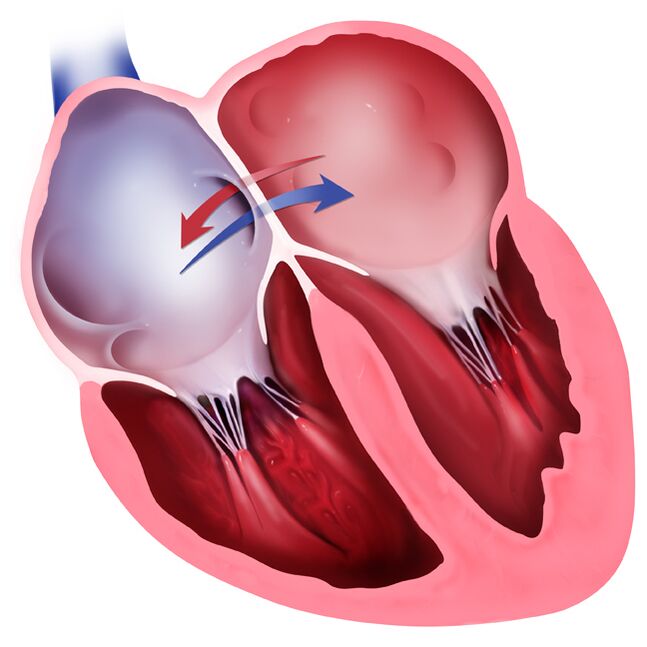
Massage can provide temporary relief from lower back pain. Some studies have shown positive results in acupuncture, others have contradicted these results. Manipulation of the spine by chiropractors or other doctors (e. g. osteopathic doctors) in combination with an exercise program can also relieve pain. However, manipulating the spine can increase the risk of additional injuries and should be avoided in those with inflammatory arthritis, neck problems that cause cervical instability, or herniated discs.
It is recommended to sleep in a comfortable position on a medium-firm mattress. If you sleep on your back, you should have a pillow under your knees. Patients sleeping on their side should use a pillow that allows them to keep their head in a neutral position (without bending their neck up or down). Patients should place a second pillow between their knees, with knees and hips slightly bent, if this will relieve lower back pain. Patients can continue to sleep on their stomach if they are comfortable.
Continue or start other preventive measures (correct posture, correct weightlifting technique). When such events are carried out, attacks of back pain usually disappear in a period of several days up to 2 weeks. Regardless of the treatment, 80 to 90% of these attacks subside within 6 weeks.
Treating Chronic Back Pain
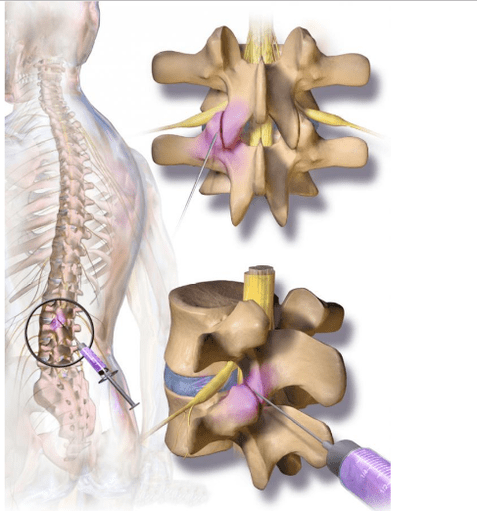
Additional measures are required to treat chronic low back pain. Aerobic exercise is advisable and weight loss is recommended if necessary. If analgesics are ineffective, other treatments should be prescribed.
Transcutaneous electroneurostimulation (TENS) is possible. CHENS devices generate a weak alternating current that causes a slight tingling sensation. This current can block some pain sensations from passing from the spinal cord to the brain. The current can be applied to the painful area several times a day, the duration of the session is 20 minutes to several hours depending on the severity of the pain.
Sometimes corticosteroids with a local anesthetic are injected periodically into the facet joint of the spine or into the epidural space - between the spine and the outer layer of tissue that covers the spinal cord. Epidural injections may be more effective for sciatica, which is more likely due to a herniated disc than to lumbar spinal stenosis. However, they may not have long-term beneficial effects. They usually only last a few days or weeks. Their main purpose is to relieve pain so you can exercise for long term pain relief.
Surgery for back pain

In cases where a herniated disc leads to persistent or chronic sciatica, weakness, loss of sensitivity, or stool and urinary incontinence, it may be necessary to surgically remove the protruding part of the disc (discectomy) and, in some cases, part of the vertebrae (laminectomy).
In severe spinal stenosis, a large part of the posterior vertebra (lamellae of the vertebral arch) can be removed in order to expand it (lumballaminectomy). General anesthesia is usually required. The hospital stay is usually 4 to 5 days. Patients can return to normal activities in 3-4 months. Adequate or complete recovery is seen in about two-thirds of patients. For the rest of the patients, such an operation can prevent pain and other symptoms from worsening.
If the spine is unstable (which could be due to a severe herniated disc, spondylolisthesis, or a laminectomy for spinal stenosis), surgery to fuse the vertebrae (called lumbar arthrodesis) may be done. However, the fusion restricts mobility, can result in excessive mechanical stress on the rest of the spine and lead to problems in the future.
Compression fractures of the spine
Compression fractures of the spine are quite common in women over 50. They can be treated conservatively without surgery with braces, pain relievers, and possibly calcitonin nasal spray, which doesn't help bone healing but can relieve pain.
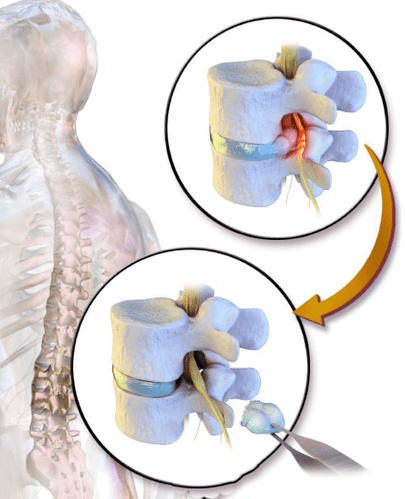
If adequate pain control cannot be achieved, two surgical options are available:
- Vertebroplasty: Injection of cement mortar into a broken bone.
- Kyphoplasty: Inserting a balloon into a broken bone to make room. The balloon is then filled with cement.
However, recent studies have shown that the effectiveness of these surgical procedures in the long term does not outweigh the effectiveness of non-surgical treatment options.
Important points
- Lower back pain is common. It is usually caused by musculoskeletal disorders of the spine and factors such as fatigue, being overweight, and inadequate physical activity.
- Low back pain is rarely severe at a young age, and tests are usually unnecessary unless symptoms persist for many weeks.
- Patients with warning signs or patients over 55 years of age should seek medical attention immediately.
- Strengthening the abdominal and back muscles with targeted exercises will help prevent the most common types of low back pain.
- For back pain, it is usually enough to rule out measures that lead to mechanical effects on the back, take pain relievers, and in some cases apply a cold or warm compress.
- Prolonged bed rest and stretching can slow recovery.
- In severe cases, such as sensation and weakness in the legs, surgery may be needed.
- Compression fractures of the vertebrae can be treated conservatively (with braces, pain relievers, and nasal spray) or, in some cases, more aggressively surgically.





































